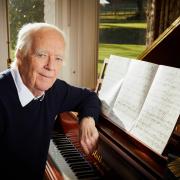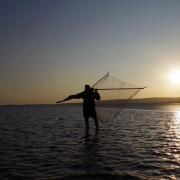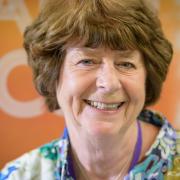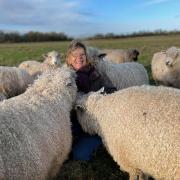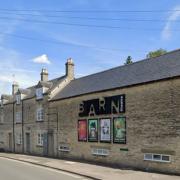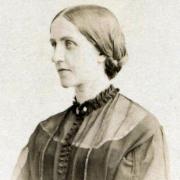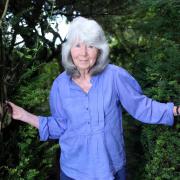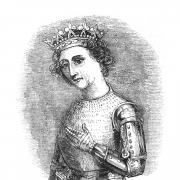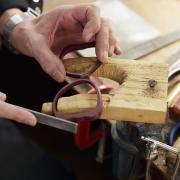Having previously mused on notable Gloucestershire births, Stephen Roberts spreads his Cotswolds net a bit wider by considering the best of the rest, namely from west (ish) Oxfordshire and southern (ish) Worcestershire
See the notable births from Gloucestershire here.
1330 (Woodstock)
You don’t get much more famous than this, Edward the Black Prince (1330-76), the martial son of a martial king, Edward III, who participated in his father’s wars against the French, the Hundred Years’ War. Born at Woodstock Palace, hence his nomenclature of ‘Edward of Woodstock’, the young prince would fight at Crecy (1346) aged just 16, then play a lead role in the victory at Poitiers (1356).
A great soldier who earned the epithet ‘the Black Prince’ because of the colour of his armour, Edward would die of dysentery aged 45, which meant he would not ascend the throne. The palace where he was born was lost during the English Civil War, its remains cleared for the building of Blenheim Palace in the early 18th century.

1676 (Bampton)
You’ve done OK if you’re commemorated in Westminster Abbey. John Philips (1676-1709) was a poet, born at Bampton (Oxon), the son of the reverend who went on to be Archdeacon of Salop. Oxford educated, Philips composed a trio of highly popular poems, including ‘Blenheim’ (1705), not about the palace, which they hadn’t started building then, but the battle, and the 1st Duke of Marlborough’s victory, after which the palace was to be named.
Always of delicate health, Philips would die of consumption aged just 33, and would be buried in Hereford Cathedral, then would have his memorial in Poets’ Corner the following year. He liked to read John Milton’s poetry and his work was compared favourably with that of the great man.

1753 (Burford)
Sir William Beechey (1753-1839) was a portrait painter, born in Burford, the son of a solicitor, who’d go on to enter the Royal Academy (1772) and become a competent painter in the style of Joshua Reynolds. Beechey’s parents died young, so he was brought up by an uncle, a solicitor, in Chipping Norton, who had a legal career mapped out for his young protégé and got as far as enrolling him as a clerk at a conveyancer near Stow. William though had other ideas. Knighted in 1798, William would have three artists among his sons (George, Henry William and Richard, who was also an admiral) and he was also father to Frederick Beechey who was a rear-admiral and accompanied three polar expeditions.

1769 (Churchill)
So, William Smith (1769-1839) is regarded as the father of English geology. He was appointed engineer to the Somerset Coal Canal (1794) and pioneered the law of strata, identified by fossil remains. His Geological Map of England (1815) was literally ground-breaking and was followed by 21 geologically-coloured maps of English counties between 1819 and ’24.
He was awarded the first Wollaston Medal, the highest accolade of the Geological Society of London and was also an expert on irrigation. Smith was born in Churchill, the son of the blacksmith. As with Beechey, his Dad died when he was young (eight), so he was also brought up by an uncle, a farming one in this case. Fame is not always fortune; he’d also spend time in debtor’s prison.

1770 (Birtsmorton)
Grade I Listed Birtsmorton Court (Worcs) is today a popular wedding venue but was once the place where William Huskisson (1770-1830) came into the world. It was his home until he was 13. An M.P. and statesman, Huskisson was an active pioneer of free trade and held various government appointments including President of the Board of Trade (1823) and Colonial Secretary (1827).
All his lifetime’s accomplishments were overshadowed, however, by the manner of his passing as he became the world’s first passenger to be a widely-reported rail fatality, killed at the opening of the Liverpool and Manchester Railway on 15th September 1830 when he was run over and killed by Stephenson’s ‘Rocket’.

1822 (Uffington)
Thomas Hughes (1822-96) was a famous novelist, most notably of Tom Brown’s Schooldays (1856), who was born in Uffington and schooled in Rugby (then at Oxford). He’d become both a lawyer and MP but is best remembered for his writing and that semi-autobiographical account of his Rugby School days, although he also wrote biographies and social studies.
Back in Uffington, the old village school, which is mentioned in Hughes’ book, is today ‘Tom Brown’s School Museum’ and has exhibits devoted to the author. The village hall is also named after the famous schoolboy cum writer. There was a lesser-known sequel to the famed volume, Tom Brown at Oxford (1861); see what he did there?

1825 (Longworth)
Let’s have another wordsmith. Richard Doddridge (R.D.) Blackmore, the author of Lorna Doone, was born at Longworth (Oxon), the son of the curate, went up to Oxford, and was called to the bar (the legal one) in 1852 before ill health prompted a change of direction and the more sedate pursuits of writing and market gardening.
Having cut his teeth on poetry, Longworth then found his forte with fiction as he churned out the first of his 15 novels in 1864. Lorna Doone, his West Country masterclass, followed five years later. R.D. also lost a parent young, a recurring theme it seems, his mother to typhus. With the exception of Lorna Doone, which remains popular to this day, Blackmore’s other work is out of print.

1870 (Evesham)
Sir Henry Fowler (1870-1938) was born and bred in Evesham, attended the town’s grammar school (Prince Henry’s), the same as me, and went on to be a railway engineer, in fact, Chief Mechanical Engineer of the Midland Railway and then its successor the LMS (London, Midland and Scottish Railway), so was responsible for much innovative locomotive design.
Born in Port Street, the son of a furniture dealer, Fowler was knighted in 1919 for his contribution to the war effort during WW1, then became the President of the Institute of Mechanical Engineers in 1927 where he could give full rein to his interest in metallurgy. He appreciated that further progress in engineering would depend on new materials that could stand up to greater stress and temperature.

1890 (Upton-upon-Severn)
Admiral William (Bill) Tennant (1890-1963) was born in Upton-upon-Severn and went on to become a naval officer who served during WW1, then, during WW2, oversaw the successful evacuation from Dunkirk in May/June 1940 (being nicknamed ‘Dunkirk Joe’ as a result), before captaining the battlecruiser HMS ‘Repulse’, surviving its sinking when it was torpedoed by the Japanese in December 1941.
He was later involved in the setting up of the Mulberry artificial harbours and Pluto oil pipelines, which contributed to the ultimate success of Operation Overlord (the Battle of Normandy). Having been born in Upton, Tennant then attended Hanley Castle Grammar School. He died, aged 73, in Worcester.

1901 (Pershore)
As the last surviving veteran to have served in both world wars, it is apt perhaps that we should end with Claude Choules (1901-2011), who was born in Bridge Street, Pershore (Worcs), raised in Wyre Piddle, then served with the Royal Navy (1915-26) and Royal Australian Navy (1926-56).
Claude set numerous records due to his longevity. Having died at the age of 110, in Perth, Western Australia (May 5, 2011), he’d become the oldest British-born man the year before. He was also the last surviving military witness to the scuttling of the German fleet in Scapa Flow at the end of WW1 (1919). The Abbey Meadows housing development in Pershore had a road, Choules Close, named in his honour in 2016.
Other Oxfordshire births (selected)
c.1003 (Islip) – Edward the Confessor, King of England immediately before Harold.
c.1291 (Wallingford) – Richard of Wallingford, astronomer who suffered from leprosy.
1623 (Deddington) – Sir William Scroggs, judge who presided at ‘Popish Plot’ trials.
1632 (Oxford) – Anthony Wood, historian turfed out of Oxford for alleged libel.
1647 (Ditchley) – John Rochester (Earl), debauched poet.
c.1695 (Thame) – James Figg, champion fencer (i.e. swords) and boxer.
1876 (Juniper Hill) – Flora Thompson, authoress of ‘Lark Rise to Candleford’.
1914 (Banbury) – Sir Alan Hodgkin, Nobel Prize winning physiologist.
Other Worcestershire births (selected)
1657 (Bridgnorth) – Francis Moore, astrologer behind ‘Old Moore’s Almanac’.
1723 (Worcester) – Hannah Snell, searched world for husband whilst disguised as a man.
1775 (Stanford) – Mary Sherwood, authoress of moralistic children’s tales.
1795 (Kidderminster) – Sir Rowland Hill, post office moderniser.
1859 (Fockbury) – Alfred Housman, poet of ‘A Shropshire Lad’.
1867 (Bewdley) – Stanley Baldwin, Prime Minister during abdication crisis.
1894 (Cradley) – Jessica Blackburn, aviation pioneer, helped set up British aviation industry.
1927 (Tardebigge) – Sir John Vane, Nobel Prize winning biochemist.
References
Sir Henry Fowler K.B.E. An Henrician’s Engineering Journey (J. Kyte, 2014)
Chambers Biographical Dictionary (1974)
Evesham Observer (eveshamobserver.co.uk)




